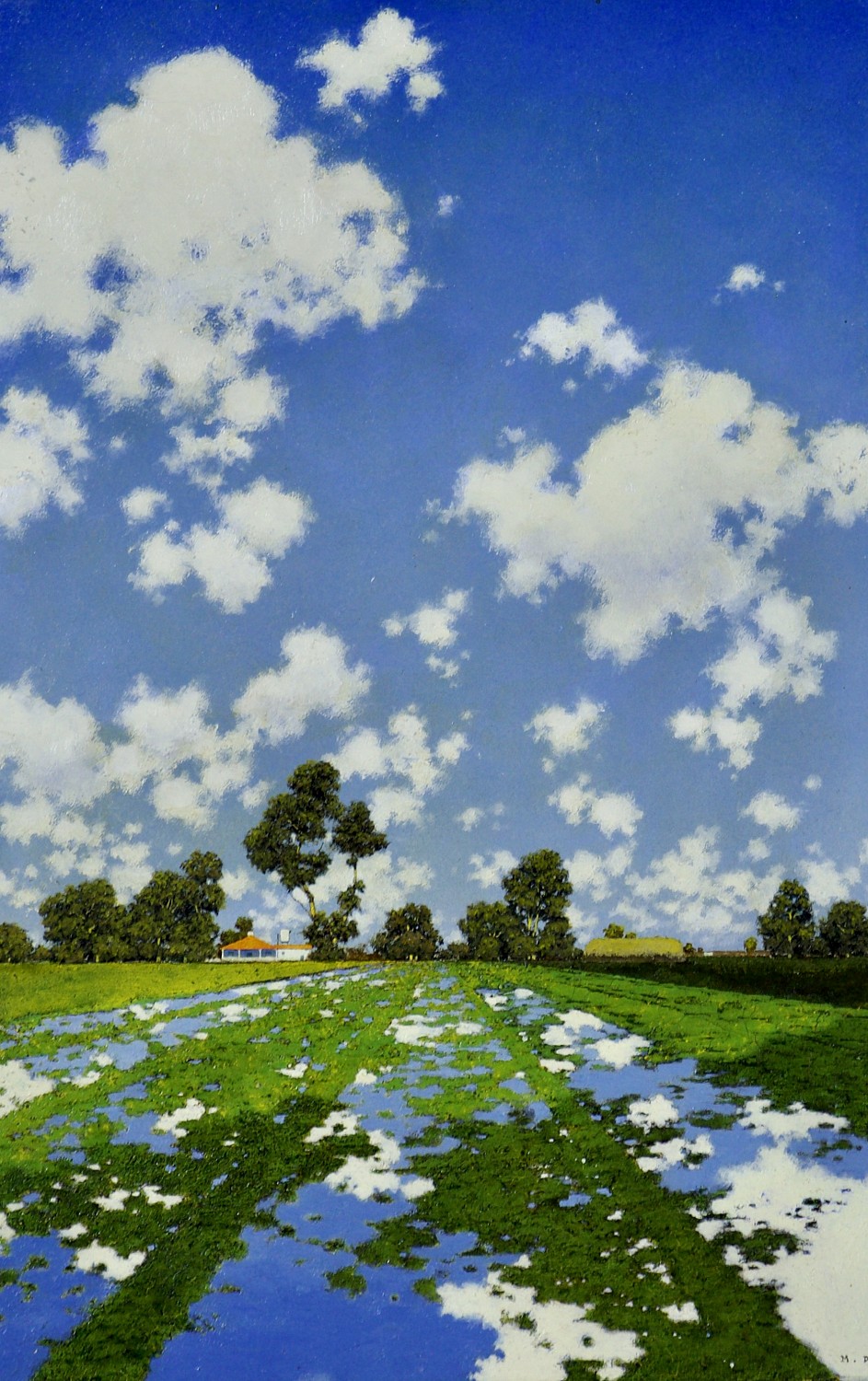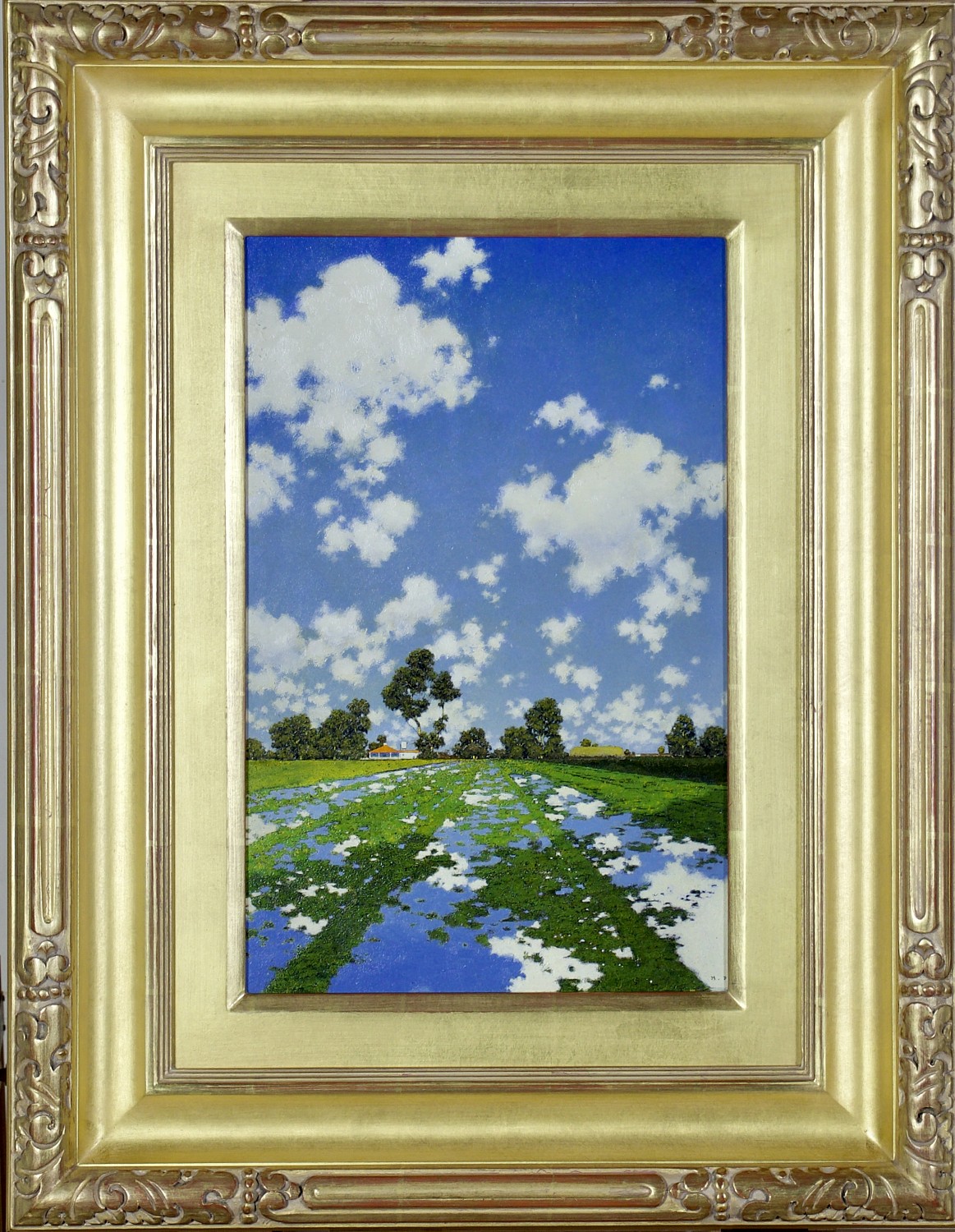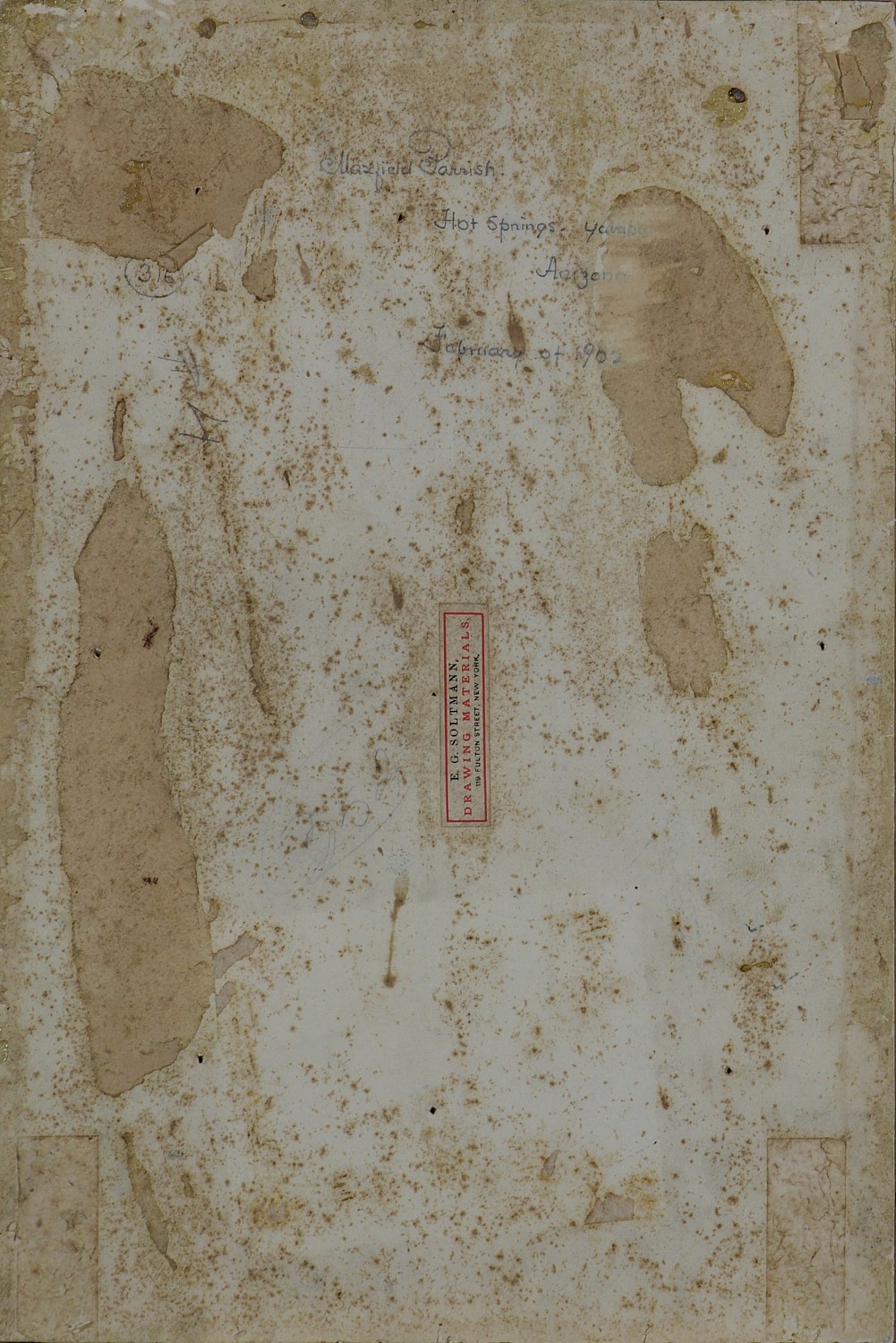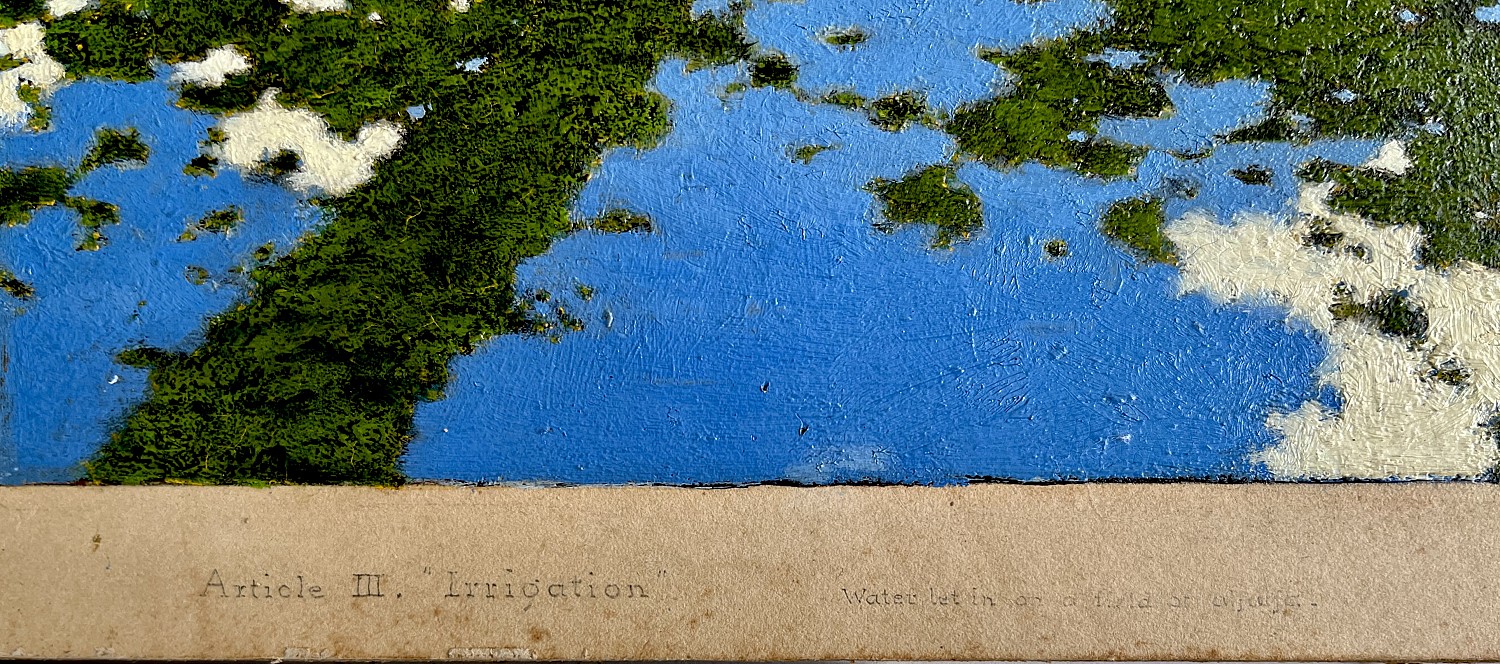"Water Let in on a Field of Alfalfa" Lot no. 4584
By Maxfield Parrish (1870-1966)
1902
15.5" x 10"
oil on paper laid down on board by the artist
Signed Lower Right
REQUEST PRICE
PURCHASE REQUEST
signed with initials M.P. (lower right); inscribed Article III. "Irrigation" water let in on a field of alfalfa (in the lower margin)
Written on back "February of 1902. Hot Springs, Yavabo Arizona"
LITERATURE:
Ray Standard Baker, "The Great Southwest; Part III, Irrigation," Century Magazine, July 1902, p. 370, illustrated (as Water Let in on a Field of Alfalfa)
Coy Ludwig, Maxfield Parrish, New York, 1973, no. 331, p. 207
Paul W. Skeeters, Maxfield Parrish: The Early Years 1893-1930, Secaucus, 1973, p. 312, illustrated
While spending time in Arizona in 1902 recuperating from an illness, Parrish painted a number of desert landscapes for Century Magazine. He found the colors of the Great Southwest vibrant and contrary to those saying the Southwest was devoid of color. "Many people are greatly surprised when told that there is not as much color in the Southwest as there is here- say in New England. But it is true, nevertheless. That is to say, the celebrated color of Arizona and New Mexico is local color. The light coming through the fine, dry air rarely give the gilding and richness we have so often here in New England. There is evidently not enough moisture in the air to color the light as it passes through. But the Southwest has local color, and lots of it," Parrish declared (Paul W. Skeeters, Maxfield Parrish: The Early Years 1893-1930, Secaucus, 1973, p. 305). Parrish wrote an open letter to Century Magazine where he commented on the inspiration behind the creation of this series. "A field of alfalfa is the most brilliant of greens," he declared (Skeeters, p. 312).
Explore related art collections: Landscape / $100,000 & Above / Rural
See all original artwork by Maxfield Parrish
ABOUT THE ARTIST
To behold the work of American illustrator Maxfield Parrish (1870–1966) is to enter into a fantasy world of ethereal beauty. Whether a book illustration, magazine cover, painting or mural commission, his flawlessly rendered subjects and fairy-tale settings are infused with a sense of mythical beauty unmatched by any artist in his wake
A Unique Approach
The magic and sublime spirit of Parrish’s work is the result of his unique approach to painting. He began with a white base which served to illuminate the image from the first layer up through to the last. Repeated layering of varnish on the surface of the pigment heightened the vibrancy of his colors, yielding shades like the famous "Parrish blue," a rich cobalt that is now indelibly associated with the artist. This singular technique allowed Parrish to convey textures and patterns with the intense detail and saturation of color that became trademarks of his best works.
This May, a museum-quality collection of 11 works by Maxfield Parrish pay tribute to the superior talent and unique vision of this seminal artist. A leading highlight of the collection is Sing a Song of Six Pence, measuring over 13 feet long and painted as a mural for the hotel bar of the Sherman House in Chicago, Illinois. Parrish began his career painting a mural of Old King Cole for the University of Pennsylvania in 1894, and was immediately recognized for his ability to render exquisite detail on a monumental scale. He often projected photographic images and then painted directly on the surface of his murals, which may account for the veracity of the features displayed in this work.







